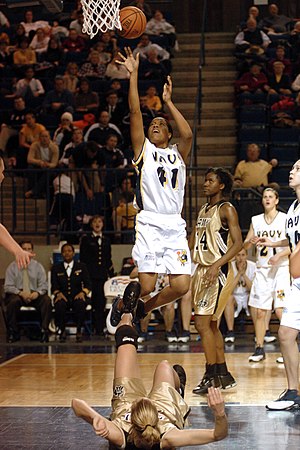Skill Related Components of Fitness and Basketball
The Components of Fitness is a term given to grouping of aspects relating to conditioning and attributes athletes can work on for sport. The components of fitness include Strength, Power, Speed, Endurance, Balance, Coordination, Reaction Time, Muscular Endurance, Cardiovascular Fitness, Body Composition and Flexibility. These are broad areas but help with categorising drills and activities as well as assisting in describing the different physiological requirements for a sport such as basketball.
It does not matter if you are playing in the NBA or running around your local gym one of the great benefits from playing basketball is it requires a high degree of fitness. At a professional level the physical demands of basketball are so high that pre-season training starts many months in advance to try and prepare athletes for the sports high requirements. In training for basketball many aspects are worked on making the players good enough to deal with the pressure and physical requirements of the game. It is this sports specific training that helps ensure that the players have good muscle endurance to enhance their technical skills.

There are two different groupings that help with our description of the Components of Fitness. The first area is Skill Related Components of Fitness. These component areas focused on the performance of technical and tactical activities involved in sports specific movements. The second area is the Health Related Components of Fitness. These components look at the physiological condition of the athlete. The health related components can expressed in general fitness and well-being.
For this discussion the Skill Related Components of Fitness are to be focused on. Skill Related Components are:
Agility refers to the ability to be able to change direction at pace while still remaining under control. In basketball when thinking of agility think of changing direction while in a defensive stance or the ability to create a lane to the basket while cutting.
Balance revolves around the concept of equilibrium and this describes the ability of an individual to remain in control of their body and maintain the desired technique. In basketball balance can seen in the performance and execution of a jump-shot or a defensive stance.
Coordination refers to bring all the body parts together in a purposeful movement. Commonly used terms are things like hand-eye coordination. In basketball, coordination can be seen in the shooting action where the whole body is utilised to achieve a very specific movement sequence.
Power is focused on short but extreme effort. In basketball activities, power can be seen when an athlete jumps and is also in the explosive acceleration needed in transition.
Reaction Time describes the time it takes an individual to act upon stimuli. In basketball this can be seen in the movements of players off the ball reading and reacting (or delay) to where the ball is and where their defensive assignment also is in relation to the ball. In this situation the better the reaction time the faster the player moves into the correct position.
Speed refers to the time needed to perform an activity. This can be overall speed of a player when sprinting or hand speed when a player is trying to steal a ball.
When speaking about fitness and conditioning an important aspect to discuss is fatigue. Fatigue gives a name to the time when players move past what their optimum level of output is and into a stage where they are unable to perform tasks as efficiently or to as high a standard as previously demonstrated. When you are tired, you will try to take shortcuts in the game and no game has ever been won using shortcuts. The quality of the play will become poor which highlights how fatigue will affect the Skill Related Components of Fitness. Areas which are first to suffer are technical skills like catching the ball in a triple threat stance, passing with accuracy or using basic movement principles such as change of pace. Being tired also means you are less likely to play defence and on the defensive end of the floor fatigue will affect rebounding as aggressively as needed. In general you will not play at your best when you are fatigued.
Basketball is a sport which demands a highly efficient level of competence and performance of technical skills found across all the Skill Related Components of Fitness. By taking this into account as a coach you can tailor your training sessions to include these elements and help your athletes become exposed to all these areas of development.



I like the valuable information you provide in your articles. I will bookmark your blog and check again here frequently. I am quite sure I’ll learn plenty of new stuff right here! Good luck for the next!.See
this is just good and valuable information. I am sure and certain that am gonna learn more new and valuable stuff right here. good luck
These skills is actually helpful.I learned a lot on this article. Looking forward for more.